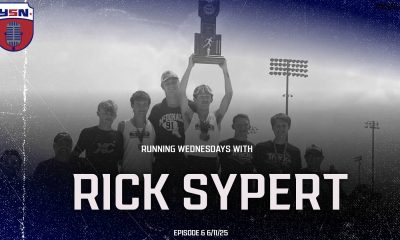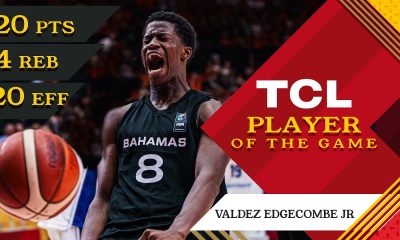NIL
And the winner of our green chile food bracket is
It’s hard to take out Father Time. The winner of The Denver Post’s annual food bracket is Brewery Bar II on 150 Kalamath St., a 69-year-old bar that voters have consistently chosen as having the best green chile in Denver. The soon-to-be septuagenarian beat out Los Dos Potrillos, a Mexican restaurant concept opening its first […]
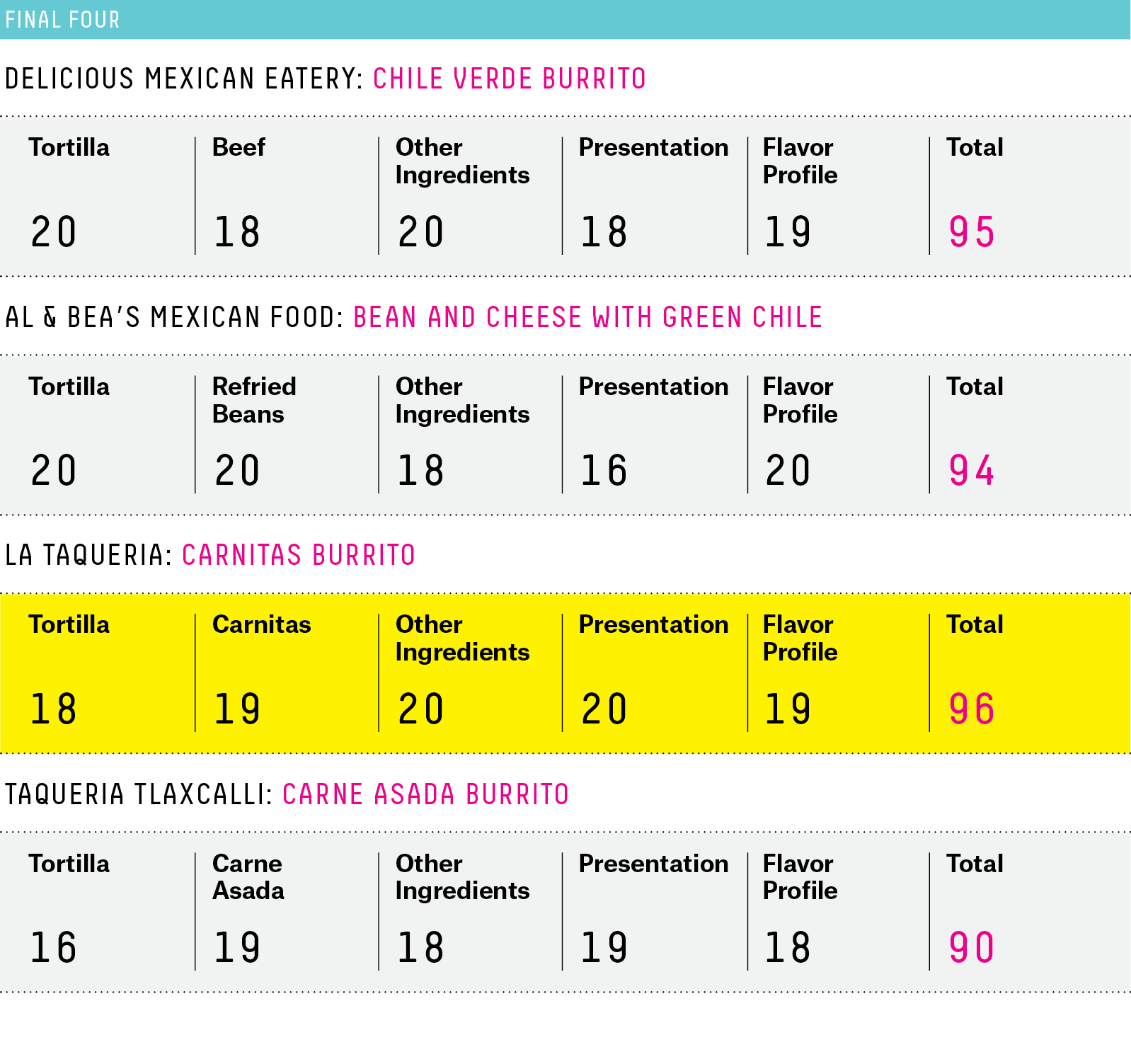

It’s hard to take out Father Time.
The winner of The Denver Post’s annual food bracket is Brewery Bar II on 150 Kalamath St., a 69-year-old bar that voters have consistently chosen as having the best green chile in Denver.
The soon-to-be septuagenarian beat out Los Dos Potrillos, a Mexican restaurant concept opening its first location in Denver proper next week, in a redo vote held after the original drew vastly inflated numbers that pointed to the use of computer-based algorithms, or bots.
The make-up vote required voters to list a name and e-mail address. Of the 432 entries received, 69% chose Brewery Bar II and its mainstay dishes, smothered in signature green chile with enough heat to make New Mexico proud.

Brooke Eberle / The Denver Post
Who has the best green chile in Denver? Our readers voted in our March Madness bracket and determined Brewery Bar II the winner. (Brooke Eberle / The Denver Post)
first Denver restaurant opens Tuesday, April 15, at 4100 E. Mexico Ave.
Subscribe to our new food newsletter, Stuffed, to get Denver food and drink news sent straight to your inbox.
NIL
Ryan Silverfield fires back at Jeff Traylor after NIL comparison
The rivalry between Memphis football and UTSA has stretched into 2025. Ahead of the Memphis-UTSA football game in 2024, UTSA coach Jeff Traylor said Memphis had six times more NIL money than UTSA and that the Roadrunners needed to invest more money in their program. The Tigers set their pregame hype video to “Got Money” […]

The rivalry between Memphis football and UTSA has stretched into 2025.
Ahead of the Memphis-UTSA football game in 2024, UTSA coach Jeff Traylor said Memphis had six times more NIL money than UTSA and that the Roadrunners needed to invest more money in their program. The Tigers set their pregame hype video to “Got Money” by Lil Wayne.
Then the Tigers lost 44-36. It was a damaging loss that knocked Memphis out of contention for the AAC title game.
Memphis football coach Ryan Silverfield appeared on Grind City Media’s “Chris Vernon Show” on June 11 and addressed the situation.
“That head coach signed a $27 million contract,” Silverfield said of Traylor. “He should probably give some of that money back to the school, right? But hey, they beat us so I can’t say much. He’s a good coach, he’s done a good job with that program.”
UTSA went 7-6 in 2024, while Memphis went 11-2.
The two teams don’t play each other in 2025. But both will be expected to compete at the top of the conference.
UTSA brought back starting quarterback Owen McCown and is positioned to have one of the top offenses in the AAC. Memphis has had significant roster turnover, but the Tigers brought in a strong transfer class and should be competitive on both sides of the ball.
Reach sports writer Jonah Dylan at jonah.dylan@commercialappeal.com or on X @thejonahdylan.
NIL
Appeal alleging House v. NCAA settlement ‘ignored’ Title IX will pause back pay plans
Eight female athletes filed an appeal of the House v. NCAA settlement Wednesday in a California federal court, arguing that the landmark agreement violates Title IX. The appeal only addresses the back damages portion of the settlement, not the portion that establishes the system of direct revenue sharing with athletes. The watershed settlement, approved late […]

Eight female athletes filed an appeal of the House v. NCAA settlement Wednesday in a California federal court, arguing that the landmark agreement violates Title IX. The appeal only addresses the back damages portion of the settlement, not the portion that establishes the system of direct revenue sharing with athletes.
The watershed settlement, approved late Friday night by federal judge Claudia Wilken, has been years in the making. Last October Wilken granted the settlement preliminary approval, then waded through hundreds of objections filed over the ensuing eight months. Many of those objections were related to Title IX, the federal law that prohibits sex-based discrimination in education and requires schools to offer equitable opportunities to women, including in sports.
Wilken was unmoved by those objections, repeatedly saying the antitrust case had nothing to do with Title IX. But she did leave the door open for future lawsuits based on Title IX targeting how future payments from schools to athletes will be made.
The appeal will not impact revenue sharing — slated to start July 1 for all schools that have opted in — but will pause the back-pay damages portion of the settlement.
John Clune, an attorney who represents the eight women filing the appeal, said he also filed an objection during the settlement adjudication process but that nothing came of it.
“We felt like we were standing on the table waving our arms that somebody had to address this issue, but none of the parties involved wanted to address it, and the courts didn’t want to address it,” Clune told The Athletic, saying Title IX was “deliberately ignored.”
“This was the only option.”
“The injunction set by the court and agreed to by the NCAA, defendant conferences and student-athlete plaintiffs provides significant stability to college sports and enables schools to provide direct financial benefits to students-athletes totaling nearly 50% of athletics department revenue,” the NCAA said in a statement Wednesday. “The NCAA is moving forward with implementing the settlement injunction to deliver this massive win for student-athletes.”
“The Title IX issues do not belong in this antitrust case,” said Jeffrey Kessler, one of two lead plaintiffs’ attorneys in House v. NCAA. “They were thoroughly considered and properly rejected by the district court. Yet these objectors are callously delaying the distribution of damages to more than one hundred thousand athletes waiting for them so that they can quixotically pursue Title IX issues that have nothing to do with this settlement.”
The eight women represented in the lawsuit are Kacie Breeding from Vanderbilt; Lexi Drumm, Emma Appleman, Emmie Wannemacher, Riley Hass, Savannah Baron and Elizabeth Arnold from the College of Charleston; and Kate Johnson from the University of Virginia.
Drumm, a recently graduated soccer player, said she joined the appeal because female athletes have not been given the same priority as male athletes, especially those that compete in traditional revenue-generating sports such as football and basketball.
“I think for so long female athletes have just been OK with getting whatever scraps are left and are told just to be thankful that they’re even competing and not aspire for more,” said Drumm, a business administration and political science major who is heading to law school in the fall. “Title IX is supposed to be a promise to get a full seat at that table and not just get the scraps.”
The appeal argues that the $2.8 billion in damages set to be distributed to former athletes who couldn’t earn NIL (name, image and likeness) money before 2021 violates Title IX because female athletes will be paid less than football and men’s basketball players.
“I understand in a professional sphere that, I totally get it, different salaries, different revenue,” the 22-year-old Drumm said. “That’s a business, but college athletics, wasn’t supposed to be that. And I think that we need to take a step back and realize the implications that it’s having on female athletes.”
Clune said the settlement suggests “schools would have paid male athletes over 90 percent of their revenue over the past six years as though Title IX didn’t apply. If Nike wants to do that, that is their choice. If the school, or a conference acting on the school’s behalf tries to do that, they are violating the law.”
“They can either pay the athletes proportionately, or they can return all of their federal funds,” he said. “But they can’t do both.”
Clune said his clients “support a settlement of the case, just not an inaccurate one that violates federal law. The calculation of damages is based on an error to the tune of $1.1 billion. Paying out the money as proposed would be a massive error … Congress has expressly rejected efforts to prioritize benefits to football and basketball from Title IX’s requirements.”
Clune said the Title IX implications for future payouts are still to be determined. In the meantime, the appeal process is a “slow burn,” with a briefing schedule and oral arguments likely to be set in the next nine to 12 months.
“It wouldn’t surprise me if we see lawsuits against schools for those (rev share) payouts at some point,” he said.
(Photo: Andy Lyons / Getty Images)
NIL
Historic House v. NCAA settlement to benefit Seton Hall’s basketball programs
June 6 will be remembered as a day that changed the world of college sports forever—especially for both student-athletes and small universities like Seton Hall. After five years of litigation, Judge Claudia Ann Wilken approved the House v. NCAA settlement on Friday. Starting July 1, universities will be able to directly share revenue with their […]
June 6 will be remembered as a day that changed the world of college sports forever—especially for both student-athletes and small universities like Seton Hall.
After five years of litigation, Judge Claudia Ann Wilken approved the House v. NCAA settlement on Friday. Starting July 1, universities will be able to directly share revenue with their student-athletes for the first time in history—bringing an end to a system based on “amateurism” that stood for over 100 years.
The class-action lawsuit was filed in 2020 by Grant House and Sedona Prince, two former student-athletes who believed the NCAA’s rules which prevented them from compensating, despite them generating immense revenue for their respective universities, was unfair and exploitative. They also sought damages for student-athletes like themselves who lost NIL opportunities to profit before the NCAA’s 2021 policy change, which allowed compensation from third parties and collectives for that very reason.
While intended for student-athletes, the landmark decision benefits others as well. To ensure an equitable distribution of revenue and a level playing field, a key component of the $2.8 billion settlement is an annual cap system that allows universities to share up to $20.5 million directly with student-athletes. With universities held to the same revenue-sharing standard, this part of the settlement will be beneficial to smaller universities—like SHU—who struggle to compete with larger universities that have greater access to resources and funding.
As previously discussed in The Setonian, a lack of resources was a detriment to SHU’s men’s basketball program last year. Amidst what was the worst season in program history, NJ.com reported that SHU’s NIL budget was an estimated $1.5 million—the lowest in the conference.
With the settlement, that budget will increase exponentially, and the future of the men’s basketball program will look brighter than last year may have suggested.
As such, the news of the settlement was well-received and embraced by the SHU community—especially the university’s athletics department. On Tuesday, just a few days after the news, SHU Director of Athletics Bryan Felt discussed the settlement and its impact on the university in a press release posted to the university’s athletics website.
“This past weekend marked a defining moment not just in the history of college athletics, but in the heart of the game we all love,” Felt said.
Before discussing the settlement, Felt first ensured that the university’s mission and commitment to its student-athletes hadn’t changed following its approval.
“First, let me say this: our commitment to excellence has never wavered,” he said. “Our overall mission, as we have navigated the constant changes within college athletics, has [always] been the commitment to our student-athletes and how we position ourselves for long-term success.”
Following what was a tough year for SHU basketball, especially for the men’s program, Felt thanked the community for being “the heartbeat of the program(s)” and staying loyal “through [both the] highs and lows.”
“You’ve packed Prudential Center and Walsh Gym, followed us on the road, believed in our student-athletes, and lived and breathed Pirate Blue,” Felt said. “[And] for that, I thank you deeply.”
Felt said that the university’s “revenue sharing efforts will be geared towards men’s and women’s basketball,” something that most schools will not be able to do because they have to divide their revenue amongst their football and basketball programs, with the former taking a majority.
Along with other Big East universities, SHU’s lack of a football program will allow them to invest almost exclusively in their basketball programs.
Felt also added that by switching to a roster cap model, SHU Athletics can offer more student-athletes scholarship opportunities across 14 varsity sports.
In anticipation of the settlement’s approval, Felt said that Athletics had been working tirelessly to “ensure Seton Hall not only adapts but thrives in this new era” of revenue-sharing and student-athlete compensation.
“We have had to make difficult decisions that include operational reductions, and I’m deeply grateful to our university administration and campus partners for their collaboration throughout this critical planning process,” Felt said.
And yet, although Athletics is responsible for providing the framework for the future of the university’s athletic programs, Felt called on the support of the Pirate community to help that future become a reality.
“Your support—whether through ticket sales, donations to the Pirate Blue Athletic Fund, corporate partnerships, or simply showing up and making noise—fuels (our programs),” he said. “It ensures Seton Hall remains a force in the Big East and on the national stage.”
Felt concluded the press release by emphasizing that collaboration between the university’s department and fans is key to not only helping SHU return to its former glory and but also for the university to become a leader in this new era of college sports.
“Let’s show the world that Seton Hall is ready—not just to play, but to lead,” Felt said.
Zachary Mawby is the head editor of The Setonian’s Sports section. He can be reached at zachary.mawby@student.shu.edu.
NIL
Cirovski Announces 2025 Maryland Men’s Soccer Schedule
Story Links 2025 Schedule Get A Maryland Pride Pass COLLEGE PARK, MD — Maryland men’s soccer head coach Sasho Cirovski has announced the schedule for the 2025 season. The schedule features non-conference road match-ups against Wake Forest and Georgetown, as […]
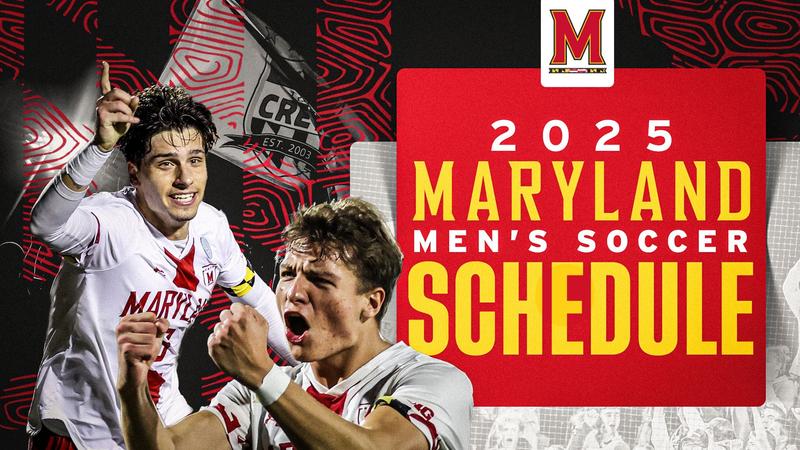
COLLEGE PARK, MD — Maryland men’s soccer head coach Sasho Cirovski has announced the schedule for the 2025 season. The schedule features non-conference road match-ups against Wake Forest and Georgetown, as well as a home contest against Pitt. In conference play, the Terrapins host the likes of Northwestern, Michigan, Rutgers, Indiana, and Washington at Ludwig Field.
“We are excited about the challenge that this schedule will pose for our squad as we head into the season”, said Coach Cirovski. With a strong group returning players and talented newcomers coming into the fold, we are thrilled with where this team is as we prepare for the 2025 campaign. The goal at Maryland as always is to strive for excellence and compete for championships, and we believe this schedule will prepare us for the tasks ahead.”
The Terrapins open their 2025 season on the road against Wake Forest on Aug. 21, a rematch of the 2024 NCAA Tournament second round meeting. The Terps then return to the DMV on Aug. 25, as they travel to the Nation’s Capital to face Georgetown.
The Terps return to Ludwig for their first home match of the season, hosting Bucknell on Aug. 29 for the first Friday Night Lights match of the season. This begins a three-game home stand where the Terps will also face Saint Francis (Sept. 1) and Pacific (Sept. 6).
Maryland begins Big Ten play on the road in 2025, traveling to Wisconsin on Sept. 12. The Terps then return home for a match against Pitt on Sept. 19.
This will mark the first meeting during the regular season between the Terps and the Panthers since the 2013 season, when both teams were members of the ACC. The Terps defeated the Panthers in that last meeting by a score of 2-0 at Ludwig Field.
Maryland closes out the month of September with a pair of conference opponents, first traveling to State College for a road match against Penn State on Sept. 23. The Terrapins then return home to College Park to face Northwestern on Sept. 26
The Terps open up the month of October with a trip out west to face UCLA on Oct. 3. The match will be the 15th all-time between the Terps and the Bruins, with the series tied at 6-6-2. The two programs met last season in College Park, playing to a 1-1 draw.
This is followed by two home matches for Maryland, first hosting Michigan on Oct. 10. After a home contest with the Wolverines, the Terps host the Rutgers Scarlet Knights on Oct. 14. The Terps then hit the road to the Buckeye State for a match against Ohio State on Oct. 18.
The Terps finish October with a three-pack of contests at Ludwig Field, beginning with an Oct. 24 fixture against Indiana. The Terps then face New Haven (Oct. 27), before closing out the month on Halloween Night against Washington.
The Terps will close out the regular season on the road, traveling to East Lansing to face Michigan State on Nov. 7.
Game times for the season are subject to change, with television designations announced at a later date.
Eight starters from the 2024 squad will return for the Terps, including First Team All-Big Ten performer Leon Koehl, Second Team All-Big Ten honoree Colin, as well as Big Ten All-Freshman Team goalkeeper Laurin Mack.
Terp fans can now purchase a Maryland Athletics Pride Pass for the upcoming athletic season for $99. The Pride Pass is an all-Olympic sports season ticket that admits the holder to all events for the following sports: Men’s Soccer, Women’s Soccer, Volleyball, Men’s Lacrosse, Women’s Lacrosse, Wrestling, and Baseball. Terrapin Club members can purchase a Pride Pass for $89. To receive this discounted offer, click the link here to login and the discounted price will be displayed.
NIL
College football, basketball or other? How schools will share revenue
Kirby Smart on college football’s future Kirby Smart urges leaders to prioritize the game’s future over personal or conference agendas in playoff talks. How much capped revenue share money will each team within an athletic department receive? That’s left to schools to decide. Welcome to “Capology.” Conventional wisdom will lead many schools to distribute most […]

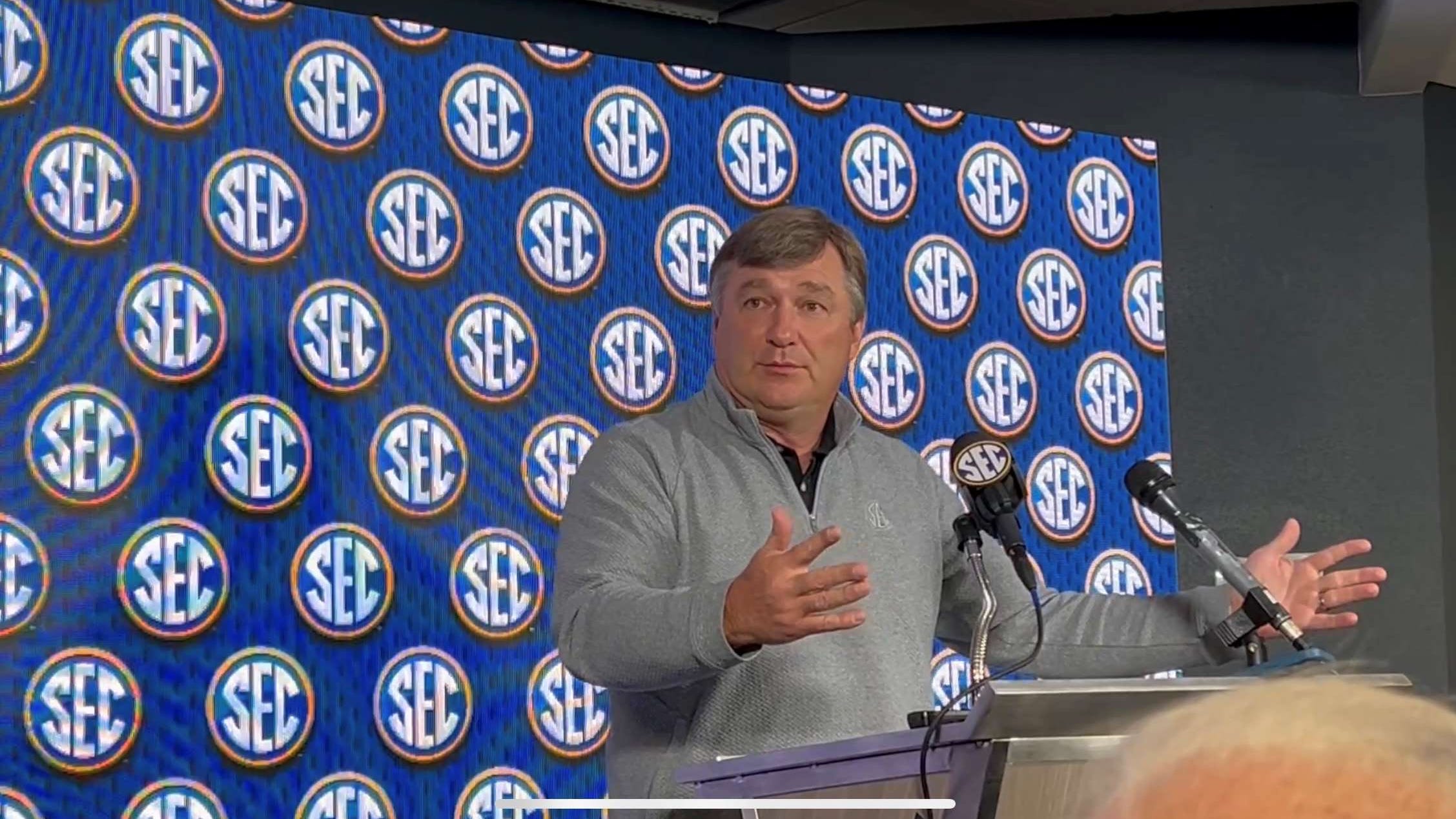
Kirby Smart on college football’s future
Kirby Smart urges leaders to prioritize the game’s future over personal or conference agendas in playoff talks.
- How much capped revenue share money will each team within an athletic department receive? That’s left to schools to decide. Welcome to “Capology.”
- Conventional wisdom will lead many schools to distribute most of their revenue share allotment to football and men’s basketball, but opportunities exist for deviations.
- Schools’ autonomy opens the door for some outside-the-box spending ideation. Schools have the chance to identify and spend on the sports that matter most to their fans and school fabric.
They’re playing a new game at college athletic departments. We’ll call it “Capology,” and game play tasks athletic directors to be the banker.
A legal settlement approved June 6 authorizes schools to directly pay athletes from athletic department coffers in the form of revenue sharing, beginning July 1. That revenue sharing will be capped this year at about $20.5 million per school.
Athletes’ separate NIL deals brokered with outside entities won’t count against a school’s revenue share cap.
How much capped revenue share money will each team within an athletic department receive? That’s left to individual schools to decide.
Commissioners from the Power Four conferences plus the rebuilt Pac-12 confirmed their schools retain the authority to determine the percentage breakdown of how they’ll distribute their capped allotment with their teams.
Decisions, decisions, for athletic directors tasked to dole out the dough.
“Things get very political really quick of who gets what resources,” Mississippi State athletic director Zac Selmon said, “but I think you’ve got to continue to invest in programs that generate the revenue. That’s No. 1.
“And No. 2, would be, what’s the fabric of your school? For us, at Mississippi State, baseball is a huge deal.”
Selmon’s assessment holds true to the way many athletic directors view this: The top revenue-generating sports of football and men’s basketball will get the lion’s share of revenue share dollars – about 90% combined across the two sports – with a smaller fraction going to women’s basketball, and other bedrock sports that help form the school’s identity will receive the leftover dollars.
MAJOR BOOST: The teams that benefit from playoff expansion
BIG FALL: SEC propaganda campaign shows it’s no longer top playoff dog
Within the SEC, at least, it’s widely believed many schools will use a baseline distribution model that uses the settlement’s backpay formula as a guide. Using this model, about 75% of a school’s revenue sharing cap will go to the football program, with about 15% going to men’s basketball, 5% to women’s basketball, and 5% for other sports.
Those 75-15-5-5 percentages, though, are not mandated, either within the SEC or beyond.
The breakdown could vary, as an institution sees fit.
“Conference to conference, school to school, sport revenue share allocations will vary based on several factors,” Oklahoma athletic director Joe Castiglione said.
Schools’ autonomy opens the door for some outside-the-box thinkers to emerge within “Capology.” This, too, is an opportunity for schools to identify and spend on the sports that matter most to their fans, and where they think they can win big.
“We’re giving our institutions discretion,” Big Ten commissioner Tony Petitti said, a sentiment echoed by the other power conference commissioners, “and they want that discretion.”
Conventional wisdom versus outside-the-box spending
Take Wisconsin, as an example.
The Badgers’ women’s basketball team last made the NCAA Tournament 15 years ago. Its robust volleyball program nearly doubles the women’s basketball team’s average attendance. Why shouldn’t Wisconsin zig where others zag and apply a higher percentage of its revenue sharing dollars toward volleyball, and less toward women’s basketball?
I’m thinking that rationale should apply, too, to Nebraska and Penn State, where powerhouse volleyball programs outperform and outdraw women’s basketball.
These Big Ten schools I’ve referenced have not disclosed their distribution percentage plan. I’m just spit-balling some “Capology” spending ideas that could allow schools to further excel in sports where they typically thrive.
Here’s another test subject: Florida women’s basketball last made a Sweet 16 in 1998, and its attendance limps behind SEC peers. The Gators’ softball program is a Women’s College World Series regular. Might Florida be better off spending less than SEC peers on women’s hoops and more on softball, in an attempt to gain separation in a diamond sport that enjoys relevance within the SEC?
In contrast, South Carolina and LSU shouldn’t put women’s basketball on the back burner. There, the women’s basketball teams outperform and outdraw their men’s counterparts. So, should the men’s programs really receive so much more in revenue sharing than the women?
“I think we need to be a little more generous than 5%,” South Carolina coach Dawn Staley told The State newspaper earlier this year, referencing the 5% baseline within the SEC for women’s basketball. “That’s my feel on it.”
Who could blame Staley for believing her team shouldn’t be shortchanged? It’s up to her institution, though, to decide how to divvy up the money. A school could even try to outspend South Carolina women’s basketball to try to accelerate past the Gamecocks.
Many schools will follow conventional wisdom on how dollars should be spent, but the opportunity exists to break from the mold.
Texas Tech revealed it plans to share 17 to 18% with its men’s basketball team, which reached the Elite Eight last season, and 2% to its women’s basketball team, which last reached the NCAA Tournament in 2013.
Priorities, right?
Football will receive most revenue share, but how much?
Consider a school that usually struggles in football. Should it allocate a smaller revenue share percentage to football than its peers and apply more money toward other sports? Perhaps, that’s worth mulling at schools where basketball or Olympic sports shine. Here’s an alternate idea: If you’re lagging in football, spend an even higher percentage of your allotment on football than the baseline, to try to close the talent gap.
Indiana showed how quickly a football team can transform from irrelevant to playoff qualifier in an era in which players may transfer without penalty.
Is it worth the risk to spend big, though, to play catchup, knowing that strategy would reduce the revenue share money available for other sports? That’s a question athletic directors must ponder.
Schools aren’t required to publicly disclose their distribution percentage plan, either, meaning one school won’t necessarily know exactly how its distribution model compares to another school.
Football revenues provide the financial lifeblood of college sports, but nothing says a basketball blueblood couldn’t spend less of its revenue share allotment on football, as compared to the industry standard, and outpace its peers on basketball spending.
“There will be some institutions that might give 60% to football and 20% to men’s basketball, or any variation one could think of,” Castiglione said, speaking in general terms and not in reference to a particular school. “That’s an institutional choice.”
Just another decision when playing “Capology.”
Blake Toppmeyer is the USA TODAY Network’s national college football columnist. Email him at BToppmeyer@gannett.com and follow him on X @btoppmeyer.
NIL
Ella Toone launches creative agency to help women's footballers
Ella Toone has launched her own creative agency. Credit: Amicizia StudiosEngland and Manchester United star Ella Toone has launched Amicizia Studios, a creative agency aimed to help women’s footballers enhance their brand. Partnering with her long-term agent, James Marshall, Toone hopes to help female athletes maximise their earning potential. This is by bridging the sponsorship […]

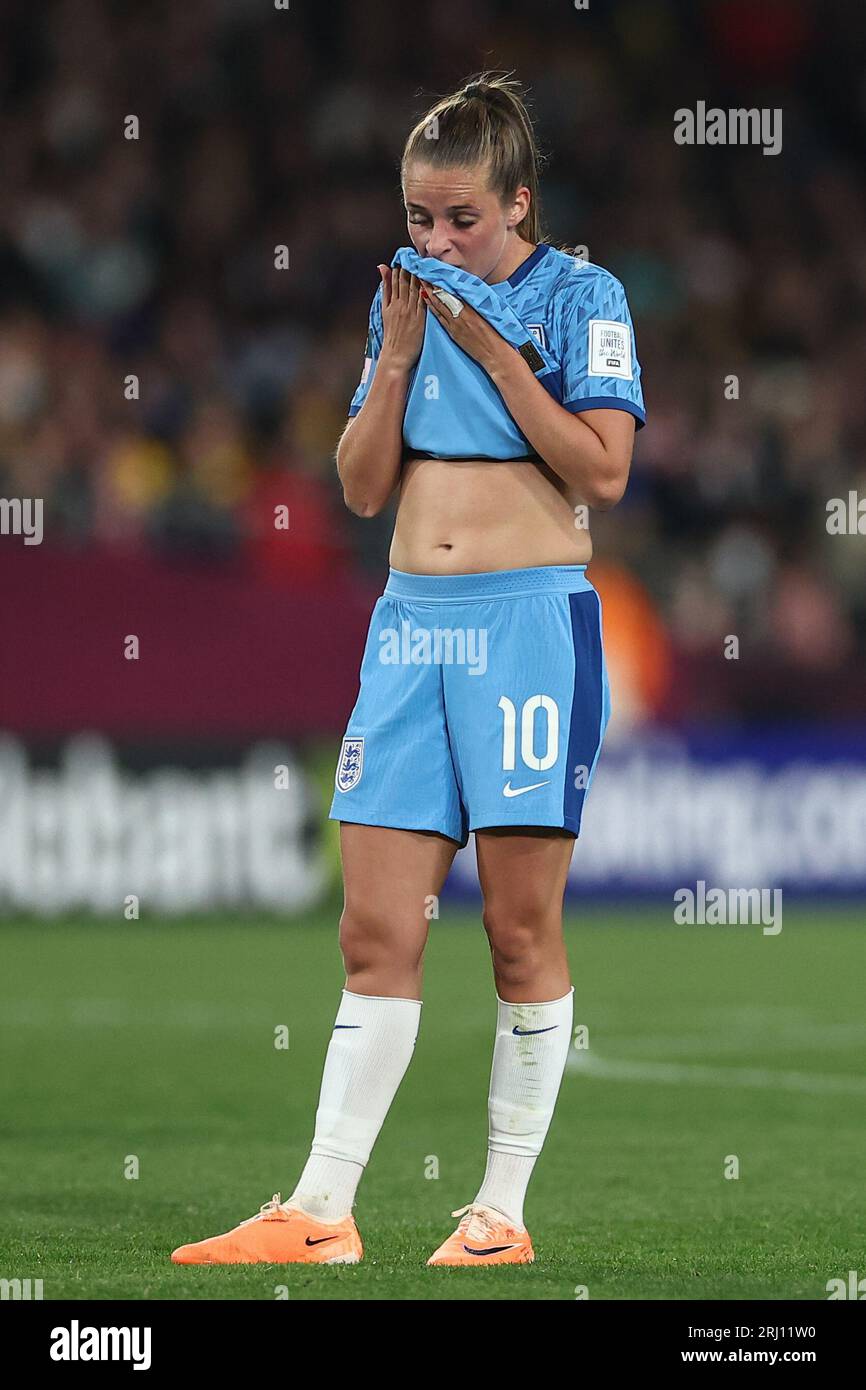

Ella Toone has launched her own creative agency. Credit: Amicizia StudiosEngland and Manchester United star Ella Toone has launched Amicizia Studios, a creative agency aimed to help women’s footballers enhance their brand.
Partnering with her long-term agent, James Marshall, Toone hopes to help female athletes maximise their earning potential.
This is by bridging the sponsorship gap in women’s football, where over 50% of Women’s Super League (WSL) players lack brand deals.
In a vision statement from Amicizia, as reported by Forbes, the company stated: “We’re not just here to get players a few deals; we’re here to build them into household names, showcasing their personalities, securing the recognition they deserve, and ensuring they receive proper fees.”
Amicizia Studios will offer services including content development (such as YouTube, podcasts, and documentaries), creative consultancy, and PR to connect athletes with brands.
Toone is Manchester United’s leading appearance maker and goalscorer with 61 goals in 188 appearances. She will also be part of the England squad aiming to defend their European Championship next month.
Why is Ella Toone launching a creative agency?
Ella Toone has launched Amicizia Studios to address the lack of brand sponsorships for WSL players, with half of them currently without deals.
Explaining her decision, she told Marketing Week: “There’s a really big gap in the market. Women’s football is growing, and more brands can be involved.”
As per Forbes, her manager James Marshall added: “Ella’s personality goes beyond football; she’s a natural storyteller.
Ella Toone has launched Manchester-Inspired Creative Agency “Amicizia Studios”, in partnership with manager James Marshall.
With over 50% of WSL players currently without sponsorship, Amicizia aims to help emerging and established female athletes enhance their brand. pic.twitter.com/HdtHn8pYDC
— Kathryn Batte (@KathrynBatte) June 12, 2025
“Through Amicizia, we want to give brands, athletes, and organisations the tools and expertise to create outstanding campaigns and content in the women’s game.
“The women’s football space is evolving fast, and brands are more engaged than ever. We’re excited to help tell these stories and drive impactful collaborations.”
Toone aims to help female athletes build their brands through partnerships in sports, fashion, and lifestyle sectors.
The Lionesses star has been building her own brand away from the football pitch. In 2023, she trademarked her own name and launched the ET7 brand. She also runs her own academy for young girls, led by FA-accredited coaches.
Toone is also one-half of the popular ‘Tooney and Russo Show’ podcast alongside England teammate Alessia Russo.
Toone included in England’s Euro 2025 squad
Ella Toone was named in Sarina Wiegman’s 23-player England squad for this summer’s Euros.
The Manchester United star scored the opening goal in England’s 2-1 victory over Germany in the Euro 2022 final three years ago.
She has become a vital part of the England squad, with 19 goals in 58 international appearances.
Toone missed two months of action for Manchester United this past season, after suffering a torn calf. She returned with a hat-trick for Manchester United against local rivals Man City, back in January.
-

 NIL2 weeks ago
NIL2 weeks ago2025 NCAA Softball Tournament Bracket: Women’s College World Series bracket, schedule set
-

 Health7 days ago
Health7 days agoOregon track star wages legal battle against trans athlete policy after medal ceremony protest
-

 College Sports2 weeks ago
College Sports2 weeks agoIU basketball recruiting
-

 Professional Sports1 week ago
Professional Sports1 week ago'I asked Anderson privately'… UFC legend retells secret sparring session between Jon Jones …
-

 Professional Sports1 week ago
Professional Sports1 week agoUFC 316 star storms out of Media Day when asked about bitter feud with Rampage Jackson
-

 Rec Sports2 weeks ago
Rec Sports2 weeks agoScott Barker named to lead CCS basketball • SSentinel.com
-

 College Sports2 weeks ago
College Sports2 weeks agoOlympic gymnastics champion Mary Lou Retton facing DUI charge
-

 Rec Sports2 weeks ago
Rec Sports2 weeks agoJ.W. Craft: Investing in Community Through Sports
-

 Motorsports2 weeks ago
Motorsports2 weeks agoNASCAR Penalty Report: Charlotte Motor Speedway (May 2025)
-

 Motorsports1 week ago
Motorsports1 week agoKalitta, Beckman & Hartford Win Mission #2Fast2Tasty Challenge at NHRA New England Nationals








